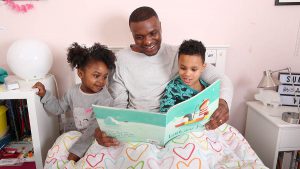Reading, Language, Empathy, the Brain
We all know how important reading is for our children. A study published in Neuroimage showed that this benefit reaches all the way down to the very structure of our children’s brains. That’s right. A study involving over 1,000 participants suggests that reading strengthens at least two regions of the left hemisphere. One region is the anterior part of the temporal lobe. This part of the brain helps us associate and categorize different types of information. For instance, to understand the meaning of a word like “hand,” the anterior left temporal lobe helps to associate visual, sensory, and motor information to convey how a “hand” looks, feels, and moves. Being able to associate and categorize information in this way also contributes to empathy, allowing us to “feel” what the other person feels based on facial expressions, muscle tones, voice fluctuations, etc.
A second region impacted is Heschl’s gyrus, which “hosts the auditory cortex.” This section of the brain makes it easier to understand and read words, to “hear them” in our head and understand their meaning.
When we combine these two areas, we discover that reading improves our language comprehension as well as our ability to empathize with others (our emotional comprehension in a sense). It enhances our ability to interpret the world around us and understand the minds of others. In other words, when we read to our children and encourage them to read, we encourage them to mature into a more empathetic and understanding adult. Teaching our children to read becomes more than just enjoyment for us and for them (which it definitely is). Teaching our children to read also becomes a benefit to our world, a service to our community.

-0 Comment-